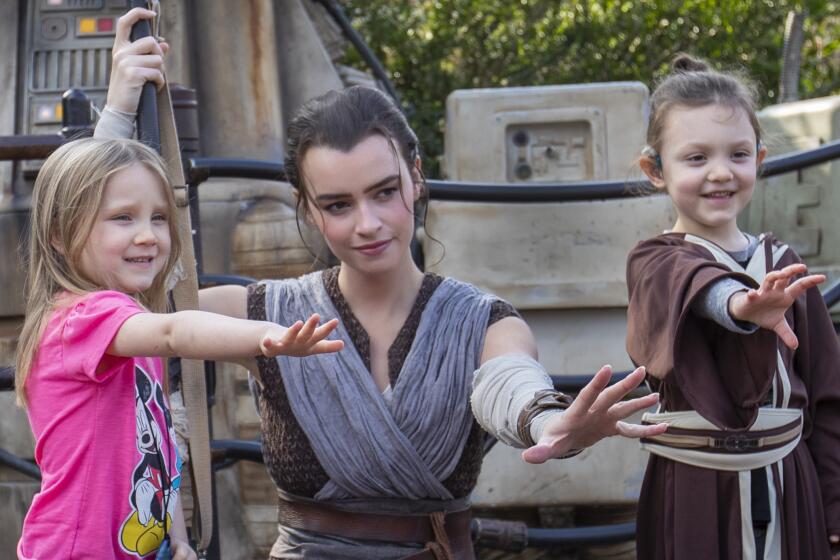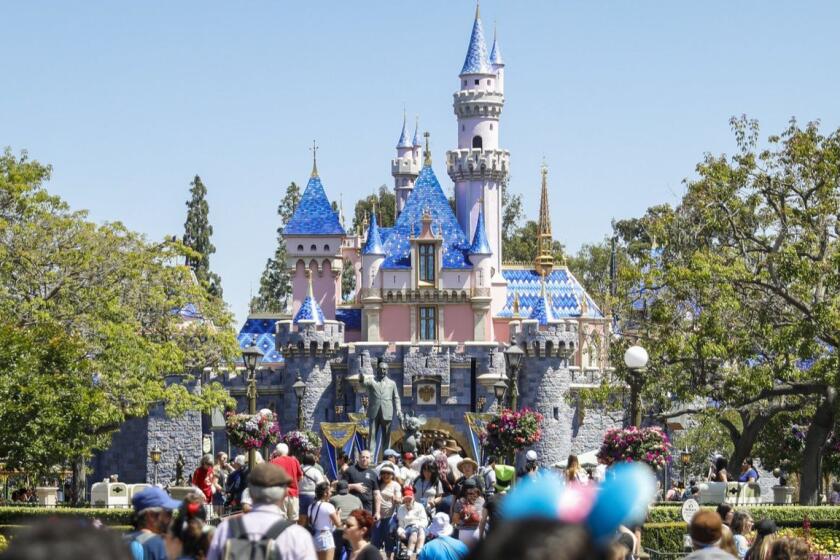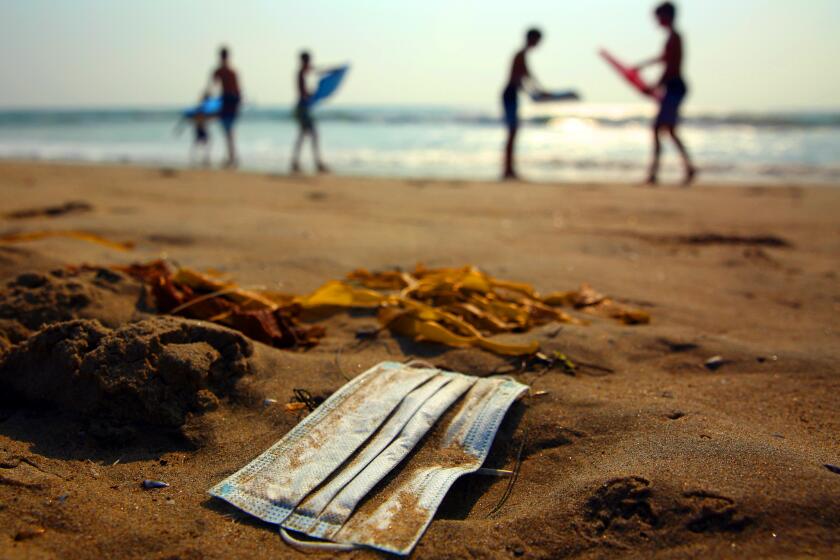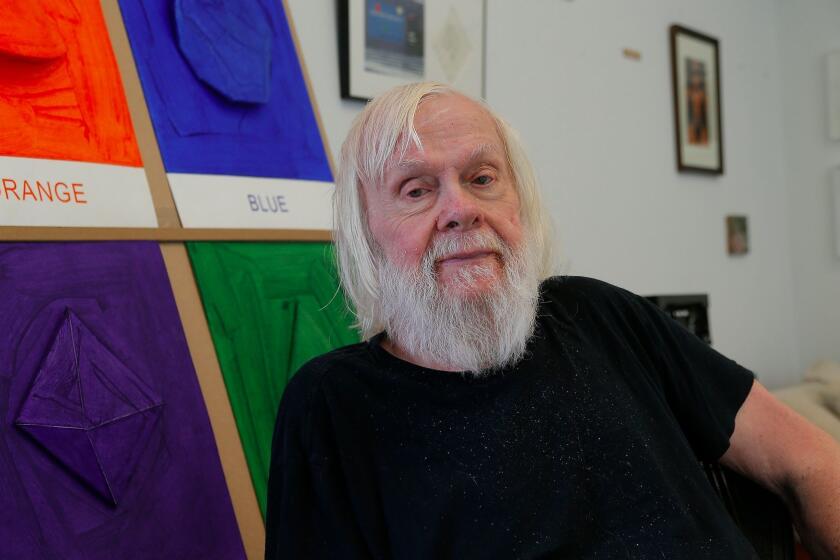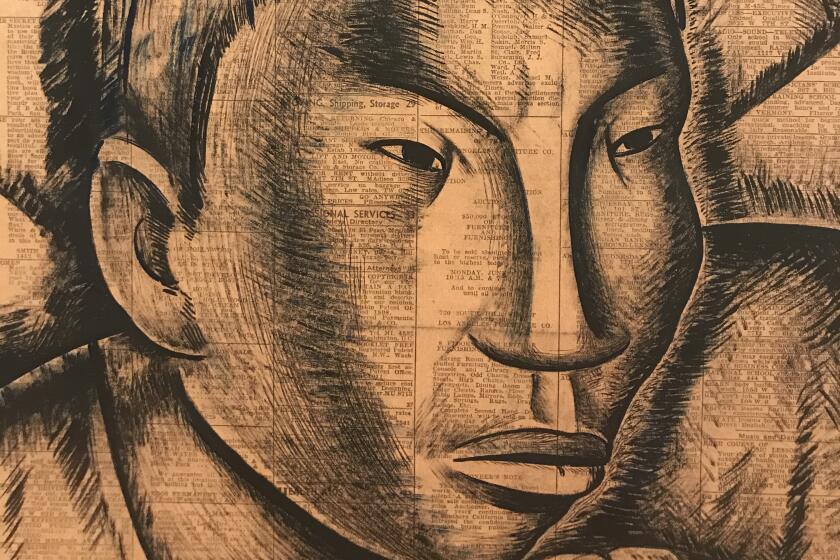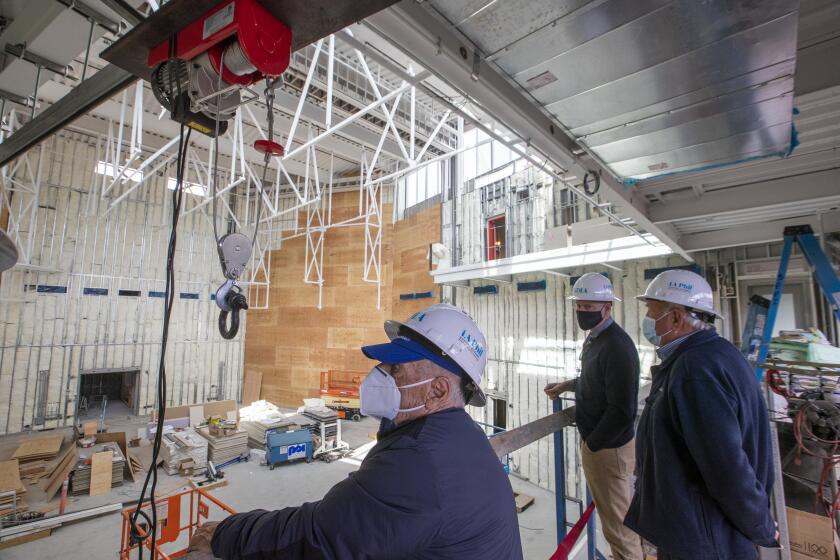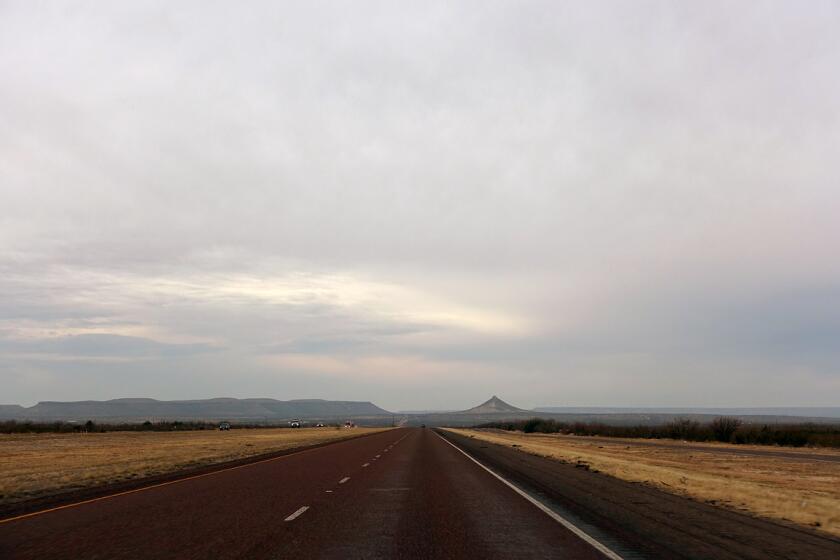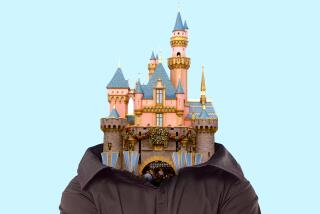Disney’s partial California Adventure reopening: Why our safe spaces in 2020 feel forever changed
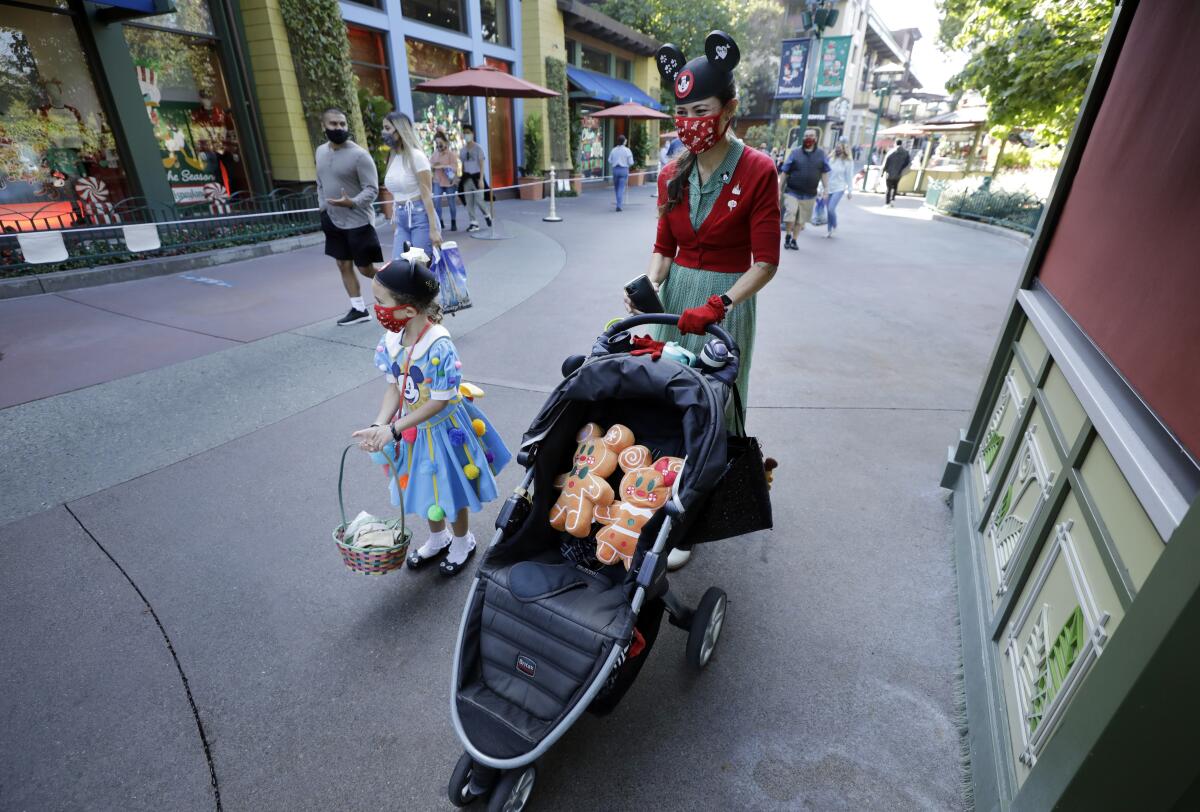
- Share via
On Thanksgiving, I made a decision that was in direct opposition to what my gut instincts told me to do: I went to the Disneyland Resort to dine at Disney California Adventure.
It was the fourth time I had dined out during the pandemic — solo twice before, and once on a date, the latter the result of a complex calculation that I made in which the risks of continuing to be alone, as well as the risk of infection, both seemed to pale in comparison to the potential of the person I met. (Sadly, the relationship went nowhere.)
In times of stress, anxiety and depression — and 2020 has been all of that and more for so many of us — it’s often comforting to visit a familiar place, a place that can reassure us that we’re still a part of a broader community, and a place that can take our mind off of reality, if even for a brief moment.
I’ve long tapped Disneyland to fill that role. More than a simple theme park, Disneyland for Southern California and beyond is on par with the region’s finest, more stereotypically art-minded institutions, a reflection of American Pop art that is at once frozen in time and in constant evolution.
The romance of Main Street and silliness of Cars Land could not exist without the cast that brings those art-directed theme park universes to life. Now they face layoffs.
And so, for the first time since March I found myself again inside a Disney theme park, a place I frequented often prepandemic and anticipate doing so again someday.
That someday, however, feels further away now than it has at any point during the last nine months.

To be sure, I had a lovely time at Carthay Circle, one of the resort’s finest restaurants, and I was happy to see some familiar staff. I do not regret going, but my time at Disney California Adventure — where only the park’s main drag was open for shopping and eating — felt tentative, a half-step everyone was taking in an effort to will ourselves into false comfort.
Any momentary solace at seeing familiar sights and people was replaced the next day with a sense of sadness, the realization that the parks are being used in ways they’re not intended to be — as a mall, and with a wait staff trying to dance away from those without masks.
And now, amid the largest and most dangerous surge in COVID-19 infections to date, plus a new stay-at-home order in effect for at least three weeks, even those scenes can’t happen. Downtown Disney has again been limited to retail and takeout only, and neighboring theme park Knott’s Berry Farm is halting its ticketed holiday food-tasting event. But neither, to me, felt like a way forward in this moment, in which local, state and federal leaders are still contradicting themselves, unable to create consistent messaging around either public health or business stability.
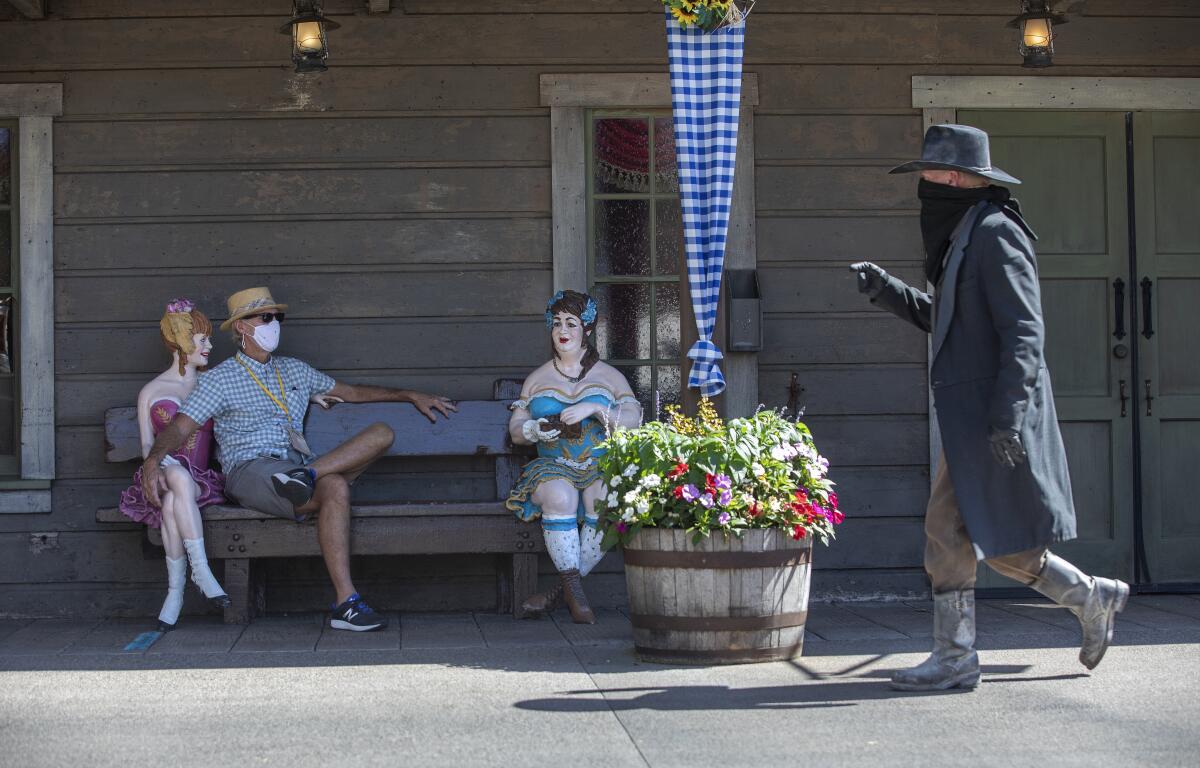
At Knott’s and Downtown Disney I watched how guests waited until the last possible moment to put on face masks, which is less an indication that theme parks can enforce rules and more a symbol of our nation’s failure in establishing them as necessary. I don’t believe this was the fault of any of those who have worked tirelessly to make our theme parks feel safe. The staff members at Disney, as well as at Knott’s Berry Farm, have been nothing less than exemplary in the effort to keep people distant and masks above the nose.
I was particularly relieved, for instance, when the wait staff at Carthay instructed diners to keep masks on at all times, removing them only to take a drink or a bite. And I was simultaneously annoyed that the dude two tables away from me interpreted this as meaning he should never once lower his beer below midchest.
The 100-year-old Knott’s Berry Farm, which had been creative over recent months with ticketed food events and limited entertainment, as well as the 65-year-old Disneyland, have long represented the shifts in Southern California leisure culture, presenting idealized versions of a cinematic past alongside cultural pastiches and, especially in the case of Disneyland, an optimistic vision for where we have yet to go.
Yet that leaves the present.
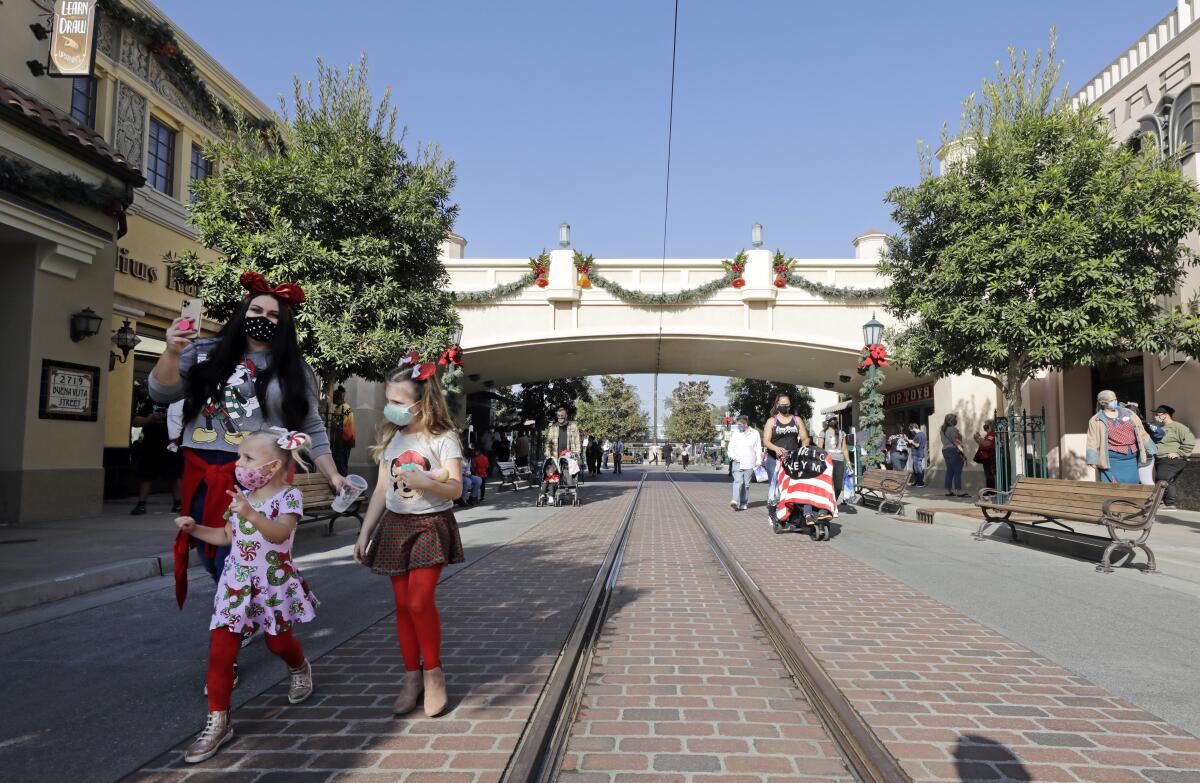
I spent about four hours on the recently opened Buena Vista Street in Disney California Adventure. About 90 minutes of that time was at the Carthay. During the rest of my visit I was hoping to capture some semblance of why the parks mean so much to me. It wasn’t possible, despite the number of Disney-focused social media personalities on Instagram who argue the opposite by posting pictures of themselves holding a corn dog. Instead, I spent the bulk of my time sitting near the exit of Soarin’ Around the World, in part because there were no other people there, and in part because this was as far as Disneyland allowed guests to go.
I also chose this place because it gave me a view of the monorail tracks, once a pitch for a transportation system that could have offered a solution to Southern California’s ultimate car-culture fate, as well as a tree-filled path that could lead to some of the most exquisitely themed areas in the park, including deep into the winding national park influence of Grizzly Peak and the Route 66 love letter of Cars Land. While I couldn’t explore, this spot reminded me of what Disney’s parks do best — that is, create a sense of curiosity as we wander among what is essentially a large-scale sculpture installation.
The more trafficked areas of Buena Vista Street simply saddened me. At the time I was there, guests were encouraged to line up to visit the shops on either side of the street. I didn’t join them, since I currently refuse to go indoors anywhere that isn’t my apartment. But the shops without the attractions also reduced the parks to their most unsavory aspects, that is places that exist as little more to buy products and encourage fetishism among collectors.
The Happiest Place on Earth shut its gates Friday night due to the coronavirus crisis. A full non-weather-related closure of Disneyland has happened just three times in the park’s 65-year history. But this time is different.
In nonpandemic times I can spend an hour or two traversing Buena Vista Street and its offshoots. Whether it’s a monorail track overpass that nods to the Glendale Boulevard-Hyperion Avenue bridge or further down and around the corner where there are architectural nods to Frank Gehry and Hollywood’s Crossroads of the World, it’s a small crash course in SoCal stylings with an emphasis on Los Feliz and Hollywood.
Due to physical distancing requirements and lines to get indoors, none of that is really possible at the moment. It’s still a Disney theme park but it’s muffled, and the tens of thousands of layoffs, many of them affecting Disney’s theme park divisions, say more about the company’s confidence of a rebound in the near future than any public statement.

Since Walt Disney World reopened this summer — no rules in Florida! — many of us have heard, repeated time and again, that the parks feel safer than just about anywhere else. That’s true, in a sense. Why, just this morning the security guard at my building refused to wear a face mask while getting me a package that had been delivered, making me fear my own apartment complex more than I did Knott’s or Downtown Disney.
But the fact that people at theme parks can be more compliant than just about anywhere else means little when outside the gates all bets are off. So before I left Disney California Adventure on Thanksgiving, I strolled back to that bench in Grizzly Peak near Soarin’. I spent a good 10 minutes staring at a monorail track, knowing no monorail would ever come.
Of course it wouldn’t. No one right now appears to have any interest in offering a symbol of a better future beyond vague promises that most of us may have access to a vaccine in May or June (fingers crossed).
So as Knott’s closes and Downtown Disney recedes, it’s simply another reminder that we’re failing as a nation to protect those who work at the parks. But the guests who enjoyed them? We’re not losing anything. The ability to walk in largely unopen parks amid a winter in which COVID-19 cases are spiraling turned these spaces into symbols of defeat, a shrug that simply said, “This is the best we can do.”
Theme parks and immersive entertainment
Theme parks and immersive entertainment from critic Todd Martens.
Globalization and technology make this pandemic different. Is it a cultural Singularity? COVID-19 unites us all, from villages to cities, and may permanently transform humankind.
What will future generations think of 2020 as they sift through the hidden caches of face masks, hand sanitizer and “I Voted” stickers? That it was a blip of infection and insanity, the moment the world changed forever — or both?
The very bad year began with very bad news: the death of a premier L.A. artist. In the face of 2020’s relentless cruelties, how would he have responded?
This was the year that streaming versions of “Hamilton,” “What the Constitution Means to Me” and “Ma Rainey” proved stage stories can shine on-screen.
Film critic Justin Chang finds passion, insult comedy and a search for meaning in two restored gems: Béla Tarr’s ‘Damnation’ and Manoel de Oliveira’s ‘Francisca.’
The Whitney Museum exhibition “Vida Americana” shows that to admire 20th century American painting is to admire its Mexican influences on artists such as Jackson Pollock, Philip Guston, Jacob Lawrence and Charles White.
Often lampooned, shows like ‘Ghost Adventures’ — full of investigators, mediums, intuitives — helped bring closure in TV critic Lorraine Ali’s own life in 2020.
In the quest for better Black representation, orchestras and opera companies are improving diversity in superficial ways. Here’s how they could do better.
TV critic Robert Lloyd spent much of the first months of 2020 as a touring musician, seeing America. And then everything stopped.
In a noisy 2020, it was too easy to overlook these 10 literary gems, from Miranda Popkey’s “Topics of Conversation” to Mieko Kawakami’s “Breasts and Eggs.”
More to Read
The biggest entertainment stories
Get our big stories about Hollywood, film, television, music, arts, culture and more right in your inbox as soon as they publish.
You may occasionally receive promotional content from the Los Angeles Times.

